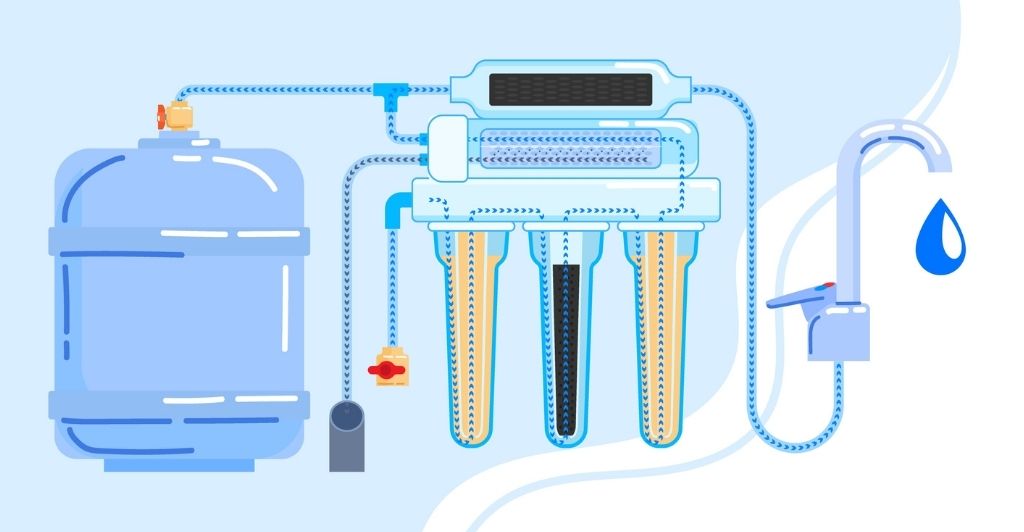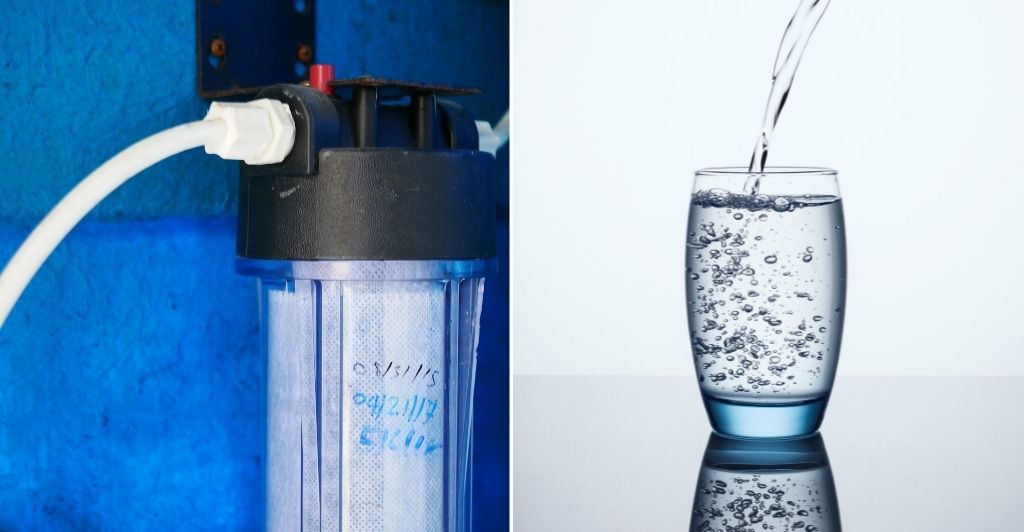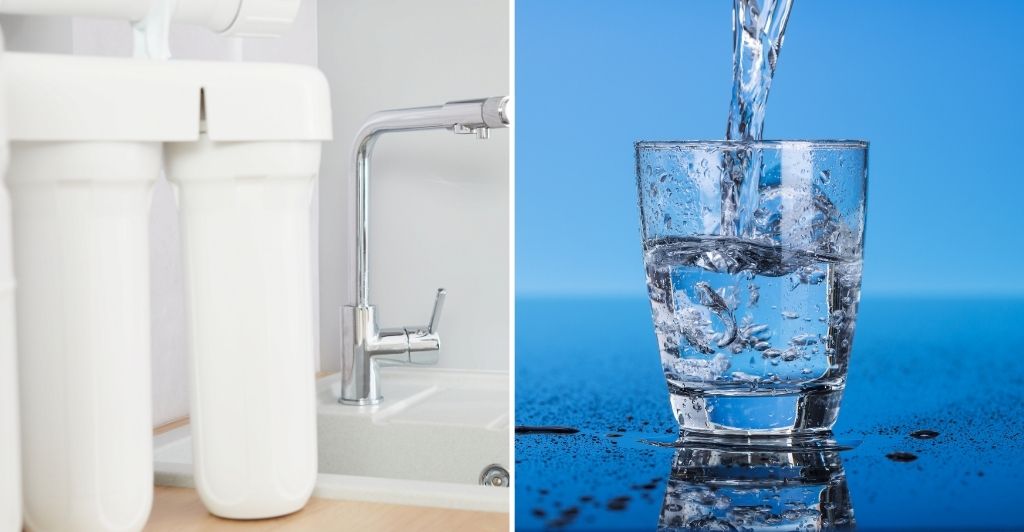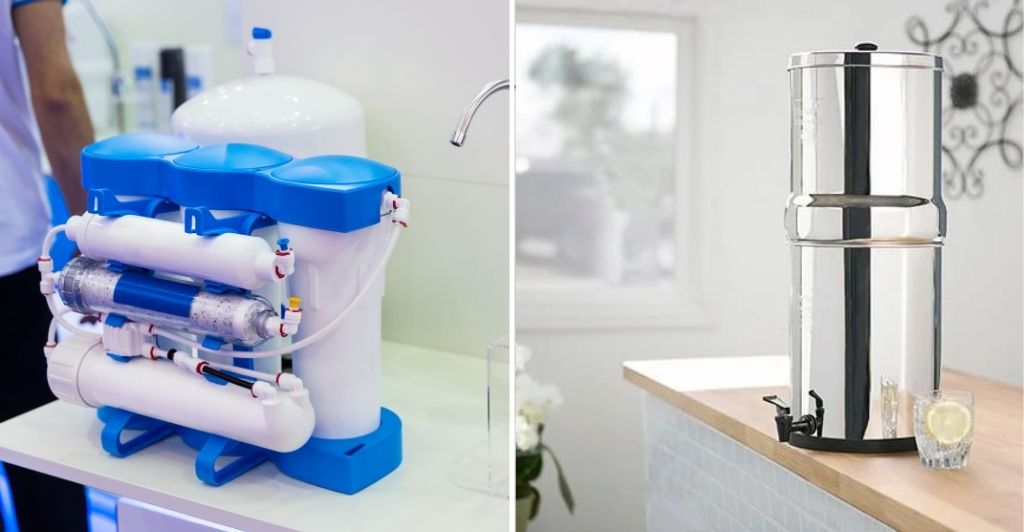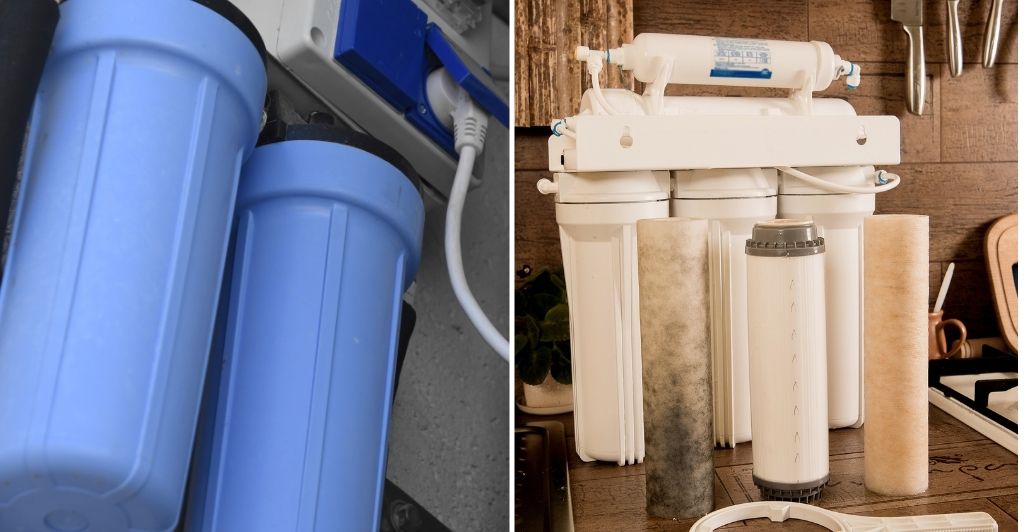Here is a compact guide wherein we are going to talk about reverse osmosis, a process for water purification. We will delve into the topic in-depth and we will also talk about how it works.
Without further ado, let’s see what it’s all about!
Reverse Osmosis Filters: What Is It?
Reverse osmosis, also known as RO is a process of water purification where a partially permeable membrane is used to separate the drinking water from several particles, unwanted molecules, and ions.
In this process, a lot of pressure is applied which is used to overcome osmotic pressure.
With the help of reverse osmosis, several kinds of dissolved, as well as suspended chemical species along with bacteria, can be removed from the water. This process is used for producing potable water, but it is also used in industrial processes.
Once the process is complete, the pure water goes through one side, while the solute stays on the membrane’s pressurized side. The membrane is made as such that it does not allow the solute to pass. However, it allows clean water to pass easily.
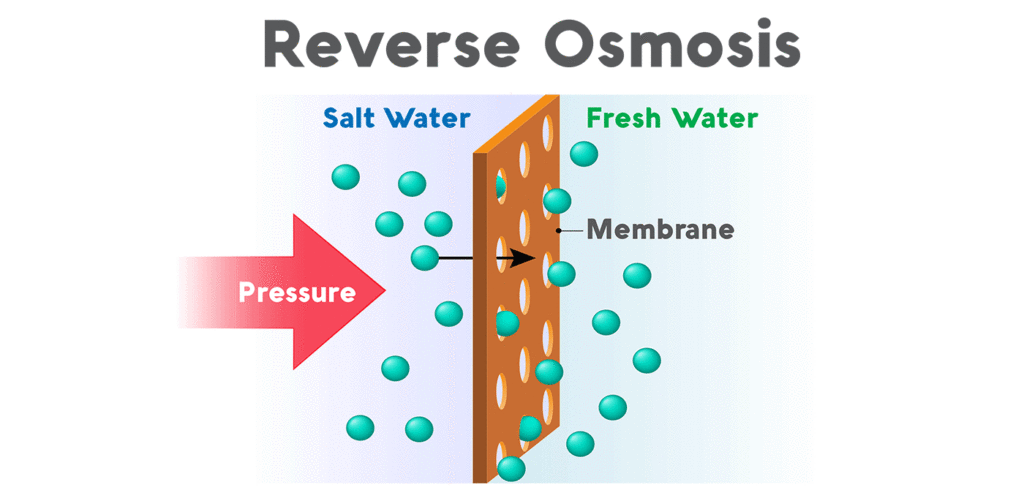
One can also say that the process of reverse osmosis is similar to that of other membrane technology applications. This process is commonly used to get pure drinking water from seawater, as salt and other solutes are removed from it to be left with clear water.
The fresh or clean water which marks the result of the process is known as permeate. On the other hand, the set water is termed brine or waste.
How Does Reverse Osmosis Work?
Talking about how it works, the RO system works toward removing chlorine and sediment from water by using a prefilter. Then, the water is forced via a semipermeable membrane, and all the dissolved solids get removed.
Once the water leaves the RO’s membrane, it then passes a postfilter, where it gets polished and finally makes an entrance in a dedicated faucet.
Depending upon the pre-filters and post-filters, several steps take place in the reverse osmosis system.
Different Stages of Reverse Osmosis Systems
The focal point of a reverse osmosis system is the RO membrane. However, other types of filtration are also included in an RO system. The RO systems are made using 3, 4, or even 5 stages of filtration.
Apart from the RO membrane, each system of reverse osmosis comes with a sediment filter along with a carbon filter. A prefilter is a filter where the water passes through it before it passes through the membrane.
On the other hand, a postfilter is a filter where the water passes through it after it passes through the membrane.
Every RO system is equipped with one or more of these filters:
1. Sediment Filter
The job of a sediment filter is to reduce all kinds of particles such as rust, dist, and dirt.
2. Carbon Filter
The carbon filter aims to reduce volatile organic compounds or VOCs along with chlorine and several other contaminants that participate in giving the water a bad odor or taste.
3. Semi-permeable Membrane
A semipermeable membrane works towards removing up to 98% of the total dissolved solids or TDS.
Working of a Reverse Osmosis Filtration System
Starting with the water entering the RO system, it enters and goes through the pre-filtration process. Carbon and sediment filters are involved in the process of prefiltration as they remove chlorine and sediment or anything that could damage or clog the reverse osmosis membrane.
Hopping onto the next step, the water then goes through the RO membrane. This is the step where all kinds of dissolved particles, no matter what their size, are removed from the water. Once the filtration process gets completed, the water is sent to the storage tank. As the name suggests, the storage tank stores the water until it is required.
The reverse osmosis system continues further. When the water faucet is turned on by the user, this water goes through another layer of filtration known as a post filter. This is the step where the water gets polished and you get clean drinking water as the end result.
Why is there a requirement for an RO Storage Tank?
An RO storage tank is required because the tank holds a good amount of reverse osmosis water so that there is always enough water for you to use.
Making water from a reverse osmosis system is a slow process. Two to three ounces of RO water is produced in one minute.
Hence, if you don’t have a storage tank, it will take the reverse osmosis system approximately 5 minutes to fill your glass with water. The storage tank ensures that your glass fills instantly.
What All is Removed By a Reverse Osmosis System?
All kinds of solids such as fluoride and arsenic go through the RO membrane and are removed by the reverse osmosis system.
The reverse osmosis system is also equipped with carbon and sediment filters that remove other unwanted particles. The carbon filters ensure that the chlorine gets removed, along with removing the bad odors and taste from the water. The sediment filter removes debris and dirt.
So the reverse osmosis system removes:
- Salt
- Fluoride
- Chlorine
- Sediment
- VOCs
- Arsenic
- Pesticides
- Herbicides
- Several other contaminants
With that being said, one needs to know that it is not the job of an RO system to remove any kind of viruses and bacteria.
In case the water you get is from a city treatment plant, then it should be safe in terms of microbiology. The reverse osmosis system does get rid of a little bacteria, but it could always grow in your membrane.
If you want to remove viruses and living organisms, then we would suggest you go with UV disinfection.
What are the Benefits of a Reverse Osmosis System?
Known to be one of the most extensive and elaborate methods of filtering water, a reverse osmosis system removes 98% of the dissolved solids, further ensuring that you drink healthier water.
Benefits of an RO system include:
- An RO system ensures that all kinds of harmful dissolved contaminants are reduced.
- Reduces sodium.
- Removes any kind of bad odor and taste.
- It is environmentally friendly in comparison with bottled water.
- It is easy to maintain and install.
- You can easily fit an RO system under your kitchen sink.
Does Water Get Wasted During the Process of Reverse Osmosis?
The water that gets rejected by the reverse osmosis system instantly goes down the drain in the form of wastewater. The reverse osmosis system comes with two streams.
One stream takes the clean water to your faucet, and the other stream takes the water with pollutants, dissolved particles, dirt, dust, salt, and everything else into the drain.
Also known as brine, the wastewater carries all such contaminants and hence, it flows into the drain. With every gallon of RO water that gets produced for you to use, 4 gallons of water flows into the drain.
However, the wastewater is not exactly waste as it is used to clean the filtered water. You can say that the process is similar to water being used to wash clothes or utensils.
What Can Be Done to Reduce Wastewater in a Reverse Osmosis System?
If you wish to reduce wastewater in a reverse osmosis system, then you can add a permeate pump. A permeate pump will act as the best way to increase the efficiency of the process and it will further reduce the wastewater from the reverse osmosis system by 75 to 80%.
Now, one thing that you’ll have to keep in mind is that not every reverse osmosis system is designed to use a permeate pump. Hence, you’ll have to pick the one that is designed in such a way that it can be attached to an additional pump.
You should also ensure that the reverse osmosis system that you choose comes with an automatic shut off valve. An ASO valve will stop the water’s flow to the drain as soon as your storage tank will get full. You can use the drain water in your garden or lawn.
Is an RO System Good for the Environment?
The water that flows to the drain needs to get rid of all the contaminants before it gets recycled. The wastewater is either sent to a water treatment plant where it gets diluted so that it can easily get treated, or it goes to the riverbeds, where it gets filtered through the hydrologic cycle.
The reverse osmosis system ensures that the water which flows into the drain is free of chemicals, as they get removed by the RO in the carbon filtration stage, further increasing the efficiency of waste treatment.
The leftover wastewater has a little number of dissolved inorganics and as a matter of fact, the reverse osmosis systems fasten the process of recycling water, as no other chemicals go into the water after it flows through the drain from your house.
Conclusion
You got to know all about the reverse osmosis system, how it works, the benefits of the reverse osmosis system, the unwanted particles that it gets rid of, whether it is environmentally friendly or not, and we also told you about the ways through which you can minimize wastewater.
We are sure that we’ve covered all your doubts, and that you know everything you needed to know about the reverse osmosis system.
